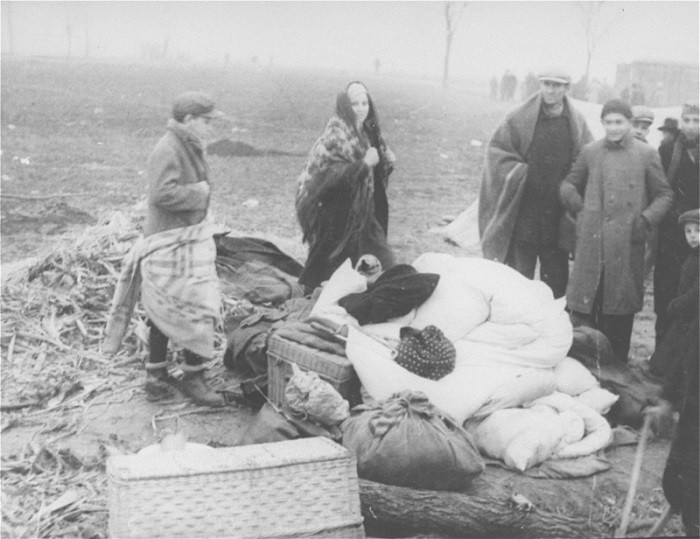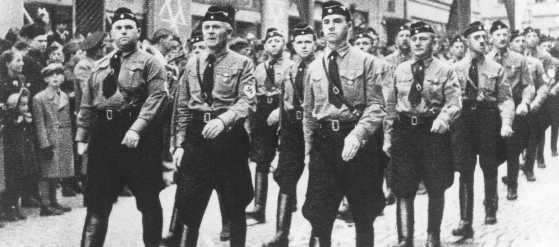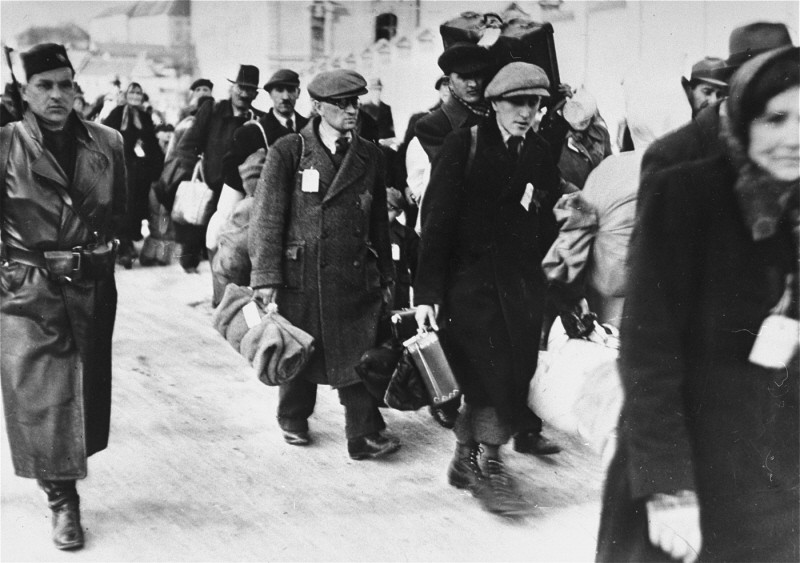Jozef Tiso
Jozef Tiso was a Slovak politician and a Roman Catholic priest. From 1939 to 1945, he was the president of the Slovak Republic, one of Nazi Germany’s allies.
Key Facts
-
1
Historians and the general public have debated Tiso’s role in the Slovak wartime state as well as his direct involvement in the deportation of more than 57,000 Slovak Jews to killing centers in Nazi-occupied Poland.
-
2
His apologists maintain that Tiso acted under pressure from Nazi Germany, while his critics suggest a larger degree of personal responsibility.
-
3
Tiso remains one of the most discussed and polarizing individuals in Slovak history.
Early Life
Jozef Tiso was born to a Slovak family on October 13, 1887 in Bytča, then part of the Austro-Hungarian Empire. Tiso was one of seven children. His father worked as a butcher and his mother was a housewife. Gifted in foreign languages, Tiso attended a lower gymnasium (secondary school) in Žilina and a seminary in Nitra. He received a doctorate in theology at the University of Vienna. Beginning in 1910, he served as a priest in several villages, including Bánovce nad Bebravou. He continued to conduct mass even while holding the position as the Slovak President. By doing so, he increased his legitimacy and power in an overwhelmingly Catholic country.
Political Life
Tiso entered active political life as a 31-year-old priest almost immediately after the creation of Czechoslovakia in 1918. He rose quickly through the ranks of Hlinka Slovak People’s Party (HSĽS). The HSĽS was a Catholic party established by Catholic priest Andrej Hlinka. Hlinka’s goal was to achieve Slovak autonomy in Czechoslovakia. Tiso was a conservative politician but did not belong to the radical wing of the party. He based his ideology on Christian principles of morality and ‘the good of the Slovak nation.’ Tiso was an elected Member of Parliament in Prague. He was even the Slovak Minister of Health before the war.
Tiso and other Slovak politicians found themselves in an increasingly difficult domestic and European situation. In fall 1938, Slovakia gained autonomy. Shortly thereafter, under the leadership of HSĽS, Slovakia lost 10,000 square kilometers and 800,000 inhabitants to Hungary in the Vienna Arbitration Award. As prime minister, Tiso shifted the blame to political opponents, Czechs, and Jews for the territorial loss and used propaganda techniques against them. In November 1938, under Tiso’s leadership, Slovakia expelled thousands of Jews to the so-called no-man’s land, a territory disputed between Slovakia and Hungary. Neither country wanted to take responsibility for more than 7,500 Jews left exposed to cold weather and without food, shelter, or provisions. After three days, Tiso reversed his decision. Most of the Jews eventually returned to Slovakia.

Alliance with Nazi Germany
In March 1939, Tiso met with Hitler in Berlin to discuss Slovakia’s future as Hitler prepared to invade Czechoslovakia. Tiso and other Slovak politicians, eager to procure independent Slovakian statehood, aligned Slovakia with Nazi Germany. They were able to avoid a foreign military occupation. However, the collaboration resulted in anti-democratic policies similar to those of Nazi Germany. The Slovak legislative body immediately appointed Tiso as the head of government. Tiso became the commander-in-chief of the Slovak military, which lent support to the German Wehrmacht during World War II. He was also the highest commander of the Slovak Hlinka Guard, a paramilitary unit responsible for repressive policies against minorities, including Jews. In 1942, he became the chairman of the HSĽS, which gave him the title “The Leader.” Tiso was thus on the top of the political hierarchy in Slovakia.
Tiso helped to create a totalitarian system with HSĽS at the helm. He publicly defended, explained, and justified Slovakia’s alliance with Nazi Germany, including methods and actions against Jews. Tiso insisted the country’s actions were on par with Christian principles.

Anti-Jewish Policies
Tiso delivered several speeches and sermons that included aggressive and antisemitic language which mirrored some Slovak radicals. He also signed a number of anti-Jewish directives. Laws enacted in 1940 “aryanized” Jewish-owned property and businesses, and dismissed thousands of Slovak Jews from their employment. The Jewish Code, signed on September 9, 1941, emulated Nazi Germany’s Nuremberg Laws. The Jewish Code was touted as among the strictest anti-Jewish laws in Nazi-occupied Europe.
Deportations of Jews from Slovakia
Slovakia was the first Axis partner to consent to the deportation of its Jewish residents in the framework of the "Final Solution." According to a census of December 15, 1940, there were about 88,951 Jews in Slovakia. In March 1942, Slovakian authorities signed an agreement with Nazi Germany that permitted the deportation of the Slovak Jews. Slovak gendarmes participated in this effort, assisted by Slovak military personnel, units of the Slovak People’s Party’s paramilitary organization, the Hlinka Guard, and members of the Slovak ethnic German paramilitary formation Freiwillige Schutzstaffel (Volunteer SS). Between March and October 1942, they concentrated some 57,000 Slovak Jews in Slovakian labor and concentration camps. They then turned them over to German SS and police units. German authorities killed virtually all of these Jews in Auschwitz, Lublin/Majdanek, Sobibor, and other locations in German-occupied Poland.
Tiso scapegoated the Jewish community for many Slovak problems. He frequently used religious antisemitic tropes to justify the country’s policies against Jews. Tiso’s supporters cite his role in granting between 800 and 1,000 exemptions to Jews, even though his office received more than 20,000 applications from desperate Jews trying to avoid deportations. In the autumn of 1942, the protests of the Vatican and other church officials through the Papal Nuncio in Bratislava caused Tiso, still a Catholic priest, to hesitate, and deportations of Jews halted temporarily.
Tiso continued to support Nazi Germany until the end, despite growing domestic unrest and a changing international situation. He maintained that the state would be saved through divine intervention as long as the Slovak nation worked honestly, remained united, and unconditionally obeyed government orders. On August 29, 1944, however, Slovak underground resistance organizations, Communist and non-Communist, rose against the Tiso regime as Soviet troops entered neighboring Subcarpathian Rus. As the Slovak authorities were helpless to quell the uprising, German troops moved in. Between September 1944 and the end of the year, German units in Slovakia also deported approximately 12,600 Slovak Jews. Most were sent to Auschwitz, Theresienstadt, and other camps in Germany. In all, German and Slovak authorities had deported more than 70,000 Jews from Slovakia; Nazi officials murdered more than 60,000 of them.

Postwar Fate
Tiso remained in power while German troops occupied Slovakia. However, his power was much diminished as Slovakia lost its de facto independence. In April 1945, Tiso fled, first to Austria and then to Bavaria. American troops captured him in the monastery of Altöting and extradited him to Czechoslovakia. Tiso was tried alongside former Interior Minister Alexander Mach and Foreign Minister Ferdinand Durčanský. The trial lasted more than four months, captivating audiences from December 1946 to April 1947. The Slovak National Court found Jozef Tiso guilty of several charges, including treason, collaboration, and the hindrance of the Slovak National Uprising. He was sentenced to death and executed four days later. Tiso was buried in an unmarked grave to prevent his grave from becoming a site of pilgrimage. In 2008, Tiso’s body was reburied in St. Emmeram's Cathedral in Nitra.
Some Slovaks still consider Tiso a martyr and continue to celebrate him today. Émigré apologists have published multiple works in which they glorify and revise Tiso’s role during the wartime state. Few contemporary politicians have cited Tiso as a national hero. Today, his legacy remains subject to debate as Slovaks reassess the history of the country’s wartime collaboration.

